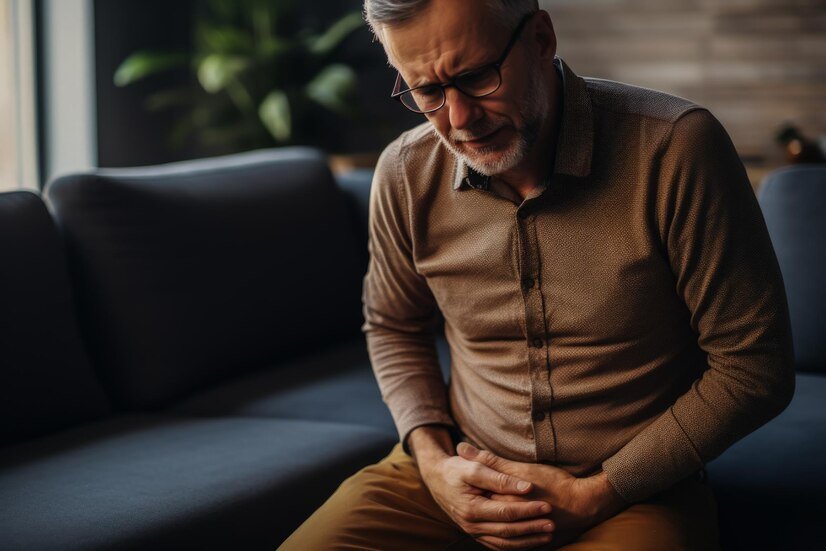Vasectomy is a widely chosen method of permanent contraception, offering a safe and effective way to prevent pregnancy. However, a small percentage of men experience chronic testicular pain following vasectomy, a condition known as Post-Vasectomy Pain Syndrome (PVPS). This blog will explore the causes, symptoms, diagnosis, and treatment options for PVPS to help those affected understand and manage their condition.
What is Post-Vasectomy Pain Syndrome (PVPS)?
PVPS is persistent or chronic pain in the testicles or scrotal region that occurs after a vasectomy and lasts for more than three months. While most men recover from a vasectomy with minimal discomfort, some develop ongoing pain that can significantly impact their quality of life.
Causes of PVPS
The exact cause of PVPS isn’t fully understood, but several possible mechanisms have been identified:
- Nerve Damage (Neuropathy)
- The vas deferens (sperm-carrying tube) is surrounded by nerves. Cutting or sealing it may damage nearby nerves, leading to chronic pain.
- Congestion Pain
- After vasectomy, sperm continue to be produced but have nowhere to go, leading to pressure buildup in the epididymis (the coiled tube at the back of the testicle).
- Inflammation & Scar Tissue
- Some men develop inflammation (granulomas) or excessive scar tissue at the vasectomy site, which can lead to pain.
- Epididymal Blowout
- Increased pressure can sometimes cause small ruptures in the epididymis, leading to discomfort.
- Autoimmune Response
- The body may recognize sperm as foreign and trigger an immune reaction, contributing to chronic pain and inflammation.
Symptoms of PVPS
Men with PVPS may experience:
- Chronic or intermittent pain in one or both testicles
- Pain that worsens with physical activity, ejaculation, or sitting for long periods
- Tenderness or swelling in the scrotal area
- Discomfort during sexual activity
- A dull, aching sensation or sharp, shooting pains
The severity of symptoms can vary, with some men experiencing mild discomfort and others facing debilitating pain that affects daily life.
Diagnosing PVPS
If you have persistent testicular pain after a vasectomy, it’s essential to seek medical advice. A urologist will typically:
- Take a detailed medical history
- Conduct a physical examination, including checking for swelling or tenderness
- Perform an ultrasound to rule out other conditions (such as testicular torsion, infection, or hernia)
- Possibly recommend nerve block tests to determine if nerve-related pain is involved
Treatment Options for PVPS
There are several treatment options, ranging from conservative approaches to surgical intervention.
1. Non-Surgical Treatments (First-Line Approach)
- Pain Management: Over-the-counter medications like ibuprofen or acetaminophen can help reduce discomfort.
- Anti-Inflammatory Medications: Corticosteroids or NSAIDs may help reduce inflammation.
- Pelvic Floor Therapy: Physical therapy targeting the pelvic muscles can sometimes relieve pain.
- Nerve Blocks: Injecting anesthetics into the affected nerves can temporarily relieve pain and help confirm a nerve-related cause.
2. Minimally Invasive Procedures
- Spermatic Cord Blocks: Injecting steroids and anesthetics into the spermatic cord can provide long-term pain relief.
- Microdenervation of the Spermatic Cord (MDSC): A surgical procedure that removes nerve fibers responsible for pain.
3. Surgical Options
- Vasectomy Reversal: In some cases, reversing the vasectomy can relieve congestion-related pain.
- Epididymectomy: The surgical removal of the epididymis may be necessary if severe congestion is the cause.
- Orchiectomy (Last Resort): Removal of the affected testicle is considered only in extreme cases where no other treatment has been successful.
Coping with PVPS: Lifestyle Tips
- Avoid prolonged sitting: If your job requires sitting for long hours, take frequent breaks to walk around.
- Wear supportive underwear: A snug-fitting jockstrap or compression shorts can provide relief.
- Apply cold packs: Ice therapy can help reduce inflammation and numb the pain.
- Modify sexual activity: If ejaculation worsens your pain, spacing out sexual activity may help.
- Seek mental health support: Chronic pain can be frustrating—consider therapy or support groups.
Final Thoughts
While PVPS is rare, it can significantly impact the lives of those affected. If you’re experiencing persistent pain after a vasectomy, don’t hesitate to consult a urologist. With the right diagnosis and treatment plan, most men can find relief and return to a pain-free life.
If you found this information helpful, share it with others who might need it!

